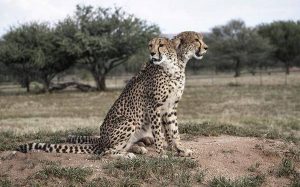Cheetah Reintroduction Project: Key Points

The cheetah, which became extinct in India after Independence, is all set to return with the Union Government launching an action plan.
- Under the ‘Action Plan for Introduction of Cheetah in India’, 50 of these big cats will be introduced in the next five years.
- The action plan was launched at the 19th meeting of the National Tiger Conservation Authority (NTCA).
- ‘Reintroduction’ of a species means releasing it in an area where it is capable of surviving.
- Reintroductions of large carnivores have increasingly been recognised as a strategy to conserve threatened species and restore ecosystem functions.
- The cheetah is the only large carnivore that has been extirpated, mainly by over-hunting in India in historical times.
- India now has the economic ability to consider restoring its lost natural heritage for ethical as well as ecological reasons.
- The cheetah, Acinonyx jubatus, is one of the oldest of the big cat species, with ancestors that can be traced back more than five million years to the Miocene era.
- The cheetah is also the world’s fastest land mammal.
- African Cheetah is listed as vulnerable in IUCN red listed species.
- The country’s last spotted feline died in Chhattisgarh in 1947. Later, the cheetah — which is the fastest land animal — was declared extinct in India in 1952.
- The Asiatic cheetah is classified as a “critically endangered” species by the IUCN Red List, and is believed to survive only in Iran.
Cheetah reintroduction programme in India:
- The Wildlife Institute of India at Dehradun had prepared a ₹260-crore cheetah re-introduction project seven years ago.
- India has plans to reintroduce cheetahs at the Kuno National Park in Sheopur and Morena districts of Madhya Pradesh’s Gwalior-Chambal region.
- This could be the world’s first inter-continental cheetah translocation project.




